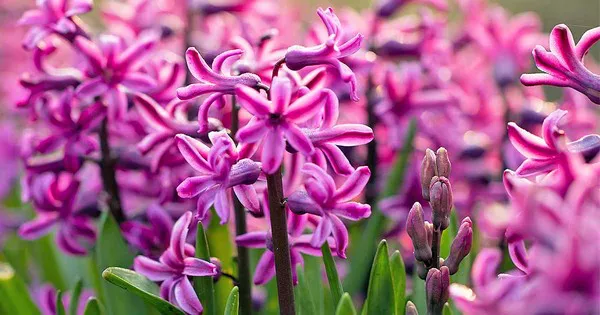Acidic soil, with its distinct pH levels below 7.0, plays a pivotal role in the successful cultivation of various plants. Among these, flowering plants have their own unique preferences when it comes to soil acidity. This article will delve into the characteristics of acidic soil and explore why some flowering plants thrive in such conditions. We will also discuss how to test soil acidity, amend it to suit specific plant needs, and provide a list of popular flowering plants that favor acidic soil.
The Nature of Acidic Soil
Acidic soil, often referred to as “sour soil,” is characterized by a pH level below 7.0, typically ranging between 4.5 and 6.0. This lower pH indicates higher acidity due to an excess of hydrogen ions (H+). The presence of these ions affects nutrient availability and microbial activity in the soil, influencing plant growth.
Why Do Some Flowering Plants Prefer Acidic Soil?
1. Nutrient Availability
Acidic soil can benefit flowering plants by making essential nutrients more accessible. In slightly acidic to moderately acidic conditions, elements like iron, manganese, and aluminum become more soluble, allowing plants to absorb them more easily. This enhanced nutrient uptake promotes healthy growth and vibrant blooms in flowering plants.
2. Microbial Activity
Acidic soil fosters specific microbial communities that aid in nutrient cycling and organic matter decomposition. These microorganisms are adapted to thrive in acidic conditions and contribute to the overall health of the soil. In turn, this benefits flowering plants by improving root development and nutrient availability.
3. Disease Resistance
Certain flowering plants that prefer acidic soil are naturally more resistant to soil-borne diseases and pests in these conditions. The acidic environment inhibits the growth of harmful microorganisms and can provide a protective shield for these plants.
Testing Soil Acidity
Before selecting and planting flowering species that thrive in acidic soil, it’s essential to determine the pH level of your garden soil accurately. You can do this by:
1. Using a pH Meter: pH meters provide precise measurements of soil pH. Insert the probe into the soil, and the device will display the pH level.
2. Using pH Test Strips: These affordable strips change color based on the soil’s pH when dipped into a soil-water mixture. Compare the color to a pH chart to determine acidity.
3. Laboratory Testing: You can send soil samples to a professional laboratory for a comprehensive analysis of pH and nutrient content. This is especially useful for large-scale or precision gardening.
Amending Soil to Suit Flowering Plants
Once you’ve identified acidic soil in your garden, you may need to adjust its pH to accommodate flowering plants that prefer these conditions. Here’s how to amend soil acidity:
1. Lime Application: To raise soil pH and make it less acidic, apply agricultural lime. The amount required depends on the current pH level and the desired increase. Follow recommendations provided by your soil test or local agricultural extension service.
2. Sulfur or Aluminum Sulfate: To lower pH and increase soil acidity, use elemental sulfur or aluminum sulfate. Again, follow recommended application rates based on your soil test results.
3. Organic Matter: Incorporate organic matter, such as compost or well-rotted manure, into the soil. Organic matter acts as a buffer, helping to stabilize pH levels and create a favorable environment for flowering plants.
Popular Flowering Plants for Acidic Soil
Now that you understand the significance of acidic soil and how to test and amend it, here’s a list of popular flowering plants that thrive in such conditions:
1. Azaleas (Rhododendron spp.): Azaleas are renowned for their vibrant, showy blooms and are well-suited to acidic soils. They prefer a pH range between 4.5 and 6.0.
2. Camellias (Camellia spp.): Camellias produce stunning, waxy flowers and prefer slightly acidic soil with a pH of 5.5 to 6.5.
3. Hydrangeas (Hydrangea spp.): The flower color of hydrangeas can be influenced by soil pH. Acidic soil (pH 5.5 or lower) tends to yield blue flowers, while more alkaline soil results in pink blooms.
4. Rhododendrons (Rhododendron spp.): These evergreen shrubs boast beautiful clusters of flowers and thrive in acidic soils with pH levels between 4.5 and 6.0.
5. Blueberries (Vaccinium spp.): Not only do blueberries produce delicious fruit, but they also feature delicate white or pink flowers and prefer acidic soil with a pH of 4.5 to 5.5.
6. Heathers (Calluna spp. and Erica spp.): These low-growing plants with tiny, colorful flowers thrive in acidic soil conditions and are ideal for adding year-round interest to your garden.
Conclusion
In the world of gardening and horticulture, understanding soil conditions is paramount to successful plant growth. Acidic soil, with its unique characteristics, offers a welcoming environment for certain flowering plants. By recognizing the preferences of these plants and taking the necessary steps to test and amend soil acidity, you can create a thriving garden filled with vibrant blooms and lush foliage. Whether you’re a seasoned gardener or just starting, exploring the wonders of acidic soil and its impact on flowering plants can be a rewarding journey toward a more beautiful and bountiful garden.


